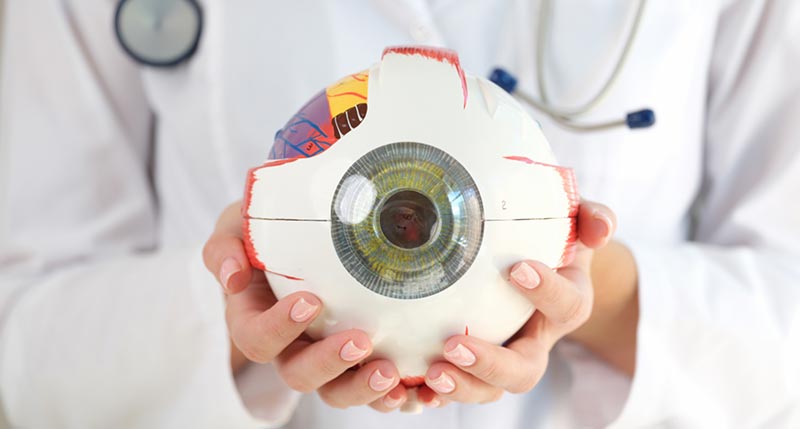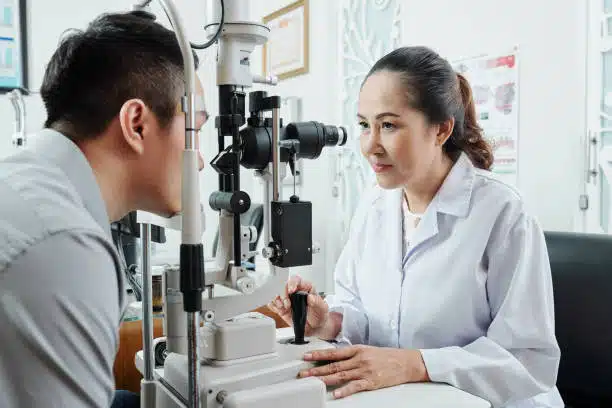Compassionate Eye Doctor: Expert Care for Riverside Citizens
Wiki Article
The Comprehensive Eye Exam: What to Expect Throughout Your Visit to the Eye Doctor
A browse through to the eye doctor for a thorough eye exam is greater than a regular examination; it is a vital step in safeguarding your aesthetic wellness. From the first conversation of your case history to the precision of the aesthetic skill test, each part of the examination offers a details objective. What exactly occurs throughout the eye health evaluation, and just how does it affect the prescription process? Recognizing these elements is vital for those that desire to maintain optimal sight. As we explore each part, the importance of follow-up recommendations will additionally end up being clear.First Examination
The preliminary examination throughout an eye exam works as a critical foundation for comprehending a person's aesthetic health and wellness requirements. This stage sets the tone for the entire evaluation process, enabling the optometrist to collect vital information concerning the patient's medical history, way of life, and details vision problems. By meticulously evaluating any pre-existing problems, drugs, or previous surgical procedures, the eye treatment professional can tailor the evaluation to deal with specific demands efficiently.
In addition, the initial consultation is a chance for people to articulate any inquiries or worries, cultivating a collaborative connection with their doctor. This interaction not just guarantees that the client really feels educated and comfy yet likewise encourages them to take part actively in their eye wellness management. Collectively, these conversations enable the optometrist to devise an individualized evaluation strategy, making sure optimum treatment and accurate diagnosis.
Visual Acuity Test
Starting the core parts of an eye examination, the visual acuity test is created to assess the sharpness and clarity of a client's vision. This vital evaluation assists figure out how well an individual can discern letters or signs at a standard distance, typically using a Snellen graph (Eye Doctor). The graph consists of rows of letters that reduce in size inside out, with the individual positioned at a traditional range of 20 feet
Throughout the examination, the person is asked to cover one eye and review out loud the tiniest line of letters they can see clearly. This procedure is duplicated for the other eye. The results are taped as a portion, with 20/20 vision suggesting normal visual acuity-- where the client can see at 20 feet what an individual with typical vision can see at that range.
The aesthetic skill test also recognizes possible refractive errors such as myopia, hyperopia, or astigmatism, which might necessitate corrective lenses. By developing a standard of visual efficiency, the examination is an important analysis device that helps the eye treatment specialist in developing an ideal therapy plan tailored to the person's one-of-a-kind aesthetic requirements.
Eye Wellness Assessment
Following the aesthetic acuity examination, a detailed eye wellness analysis is conducted to guarantee the general wellness of the eyes. This important section of the eye examination entails a comprehensive analysis of both the external and interior frameworks of the eye.Following, attention useful reference shifts to the internal structures. With making use of ophthalmoscopy or fundus photography, the retina, optic nerve, and blood vessels are meticulously reviewed. This step is important for identifying problems such as retinal detachment, glaucoma, or diabetic person retinopathy. In several cases, student expansion is carried out to enhance visibility of the interior eye frameworks, although this may cause short-lived light level of sensitivity for the client.
Additionally, intraocular pressure is gauged to evaluate for glaucoma risk. This is commonly done utilizing tonometry, which can find raised stress degrees that might recommend potential damages to the optic nerve. Jointly, these assessments create a comprehensive evaluation to maintain ocular health.
Refraction and Prescription
Refraction is an innovative treatment performed by eye care professionals to determine the accurate lens power needed to remedy refractive errors such as myopia, presbyopia, hyperopia, and astigmatism. The objective of this treatment is to examine how light bends as it passes via the eye, permitting the practitioner to figure out whether corrective lenses are necessary for improved aesthetic acuity.Throughout the refraction procedure, the patient is asked to browse a phoropter, a gadget which contains numerous lenses. The specialist will methodically transform these lenses and ask the individual to compare clarity in between alternatives up until the very best feasible vision is attained. This procedure is important in crafting a precise prescription that defines the suitable lens power for spectacles or call lenses.
The prescription stemmed from this procedure not just maximizes vision but also works as a foundation for selecting appropriate rehabilitative eyewear. It is necessary to make certain that prescriptions are consistently upgraded, as adjustments in vision can happen gradually, stressing the relevance of regular eye assessments. This meticulous attention to information assists maintain clear, comfortable vision in life.
Follow-Up Referrals

During a follow-up browse through, the eye Continued doctor will certainly perform a series of tests to evaluate visual acuity and check for any modifications in vision that might require an upgrade to the prescription. In addition, the follow-up gives a possibility to review any pain or problems experienced with present glasses. Adjustments can be made to ensure comfort and efficiency, whether with lens modification or framework adjustments.
For people with recurring conditions such as glaucoma, diabetes-related eye issues, or macular degeneration, more constant follow-ups might be required. These consultations are essential for taking care of and potentially slowing down the progression of eye disease. Sticking to these recommendations can significantly contribute to keeping aesthetic wellness and avoiding lasting complications.
Conclusion
The thorough eye examination is a crucial procedure for keeping visual wellness, including a detailed analysis of medical history and vision concerns. Key components include the aesthetic skill test, which examines eyesight quality, and the eye wellness analysis, which takes a look at the general problem of the eyes.A check out to the eye doctor for an extensive eye test navigate to this website is more than a regular exam; it is a critical action in protecting your visual wellness.Kicking off the core components of an eye assessment, the visual skill test is developed to examine the intensity and clearness of a patient's vision.Following the visual skill test, a comprehensive eye wellness analysis is carried out to guarantee the total health of the eyes. These check outs permit the eye care specialist to check changes in vision, upgrade prescriptions, and evaluate the general wellness of the eyes. Secret components consist of the visual acuity test, which assesses sight clearness, and the eye wellness assessment, which examines the overall condition of the eyes.
Report this wiki page